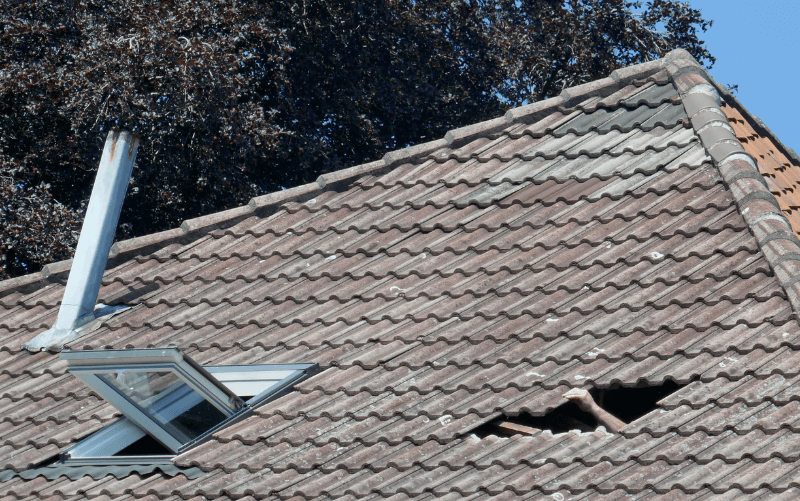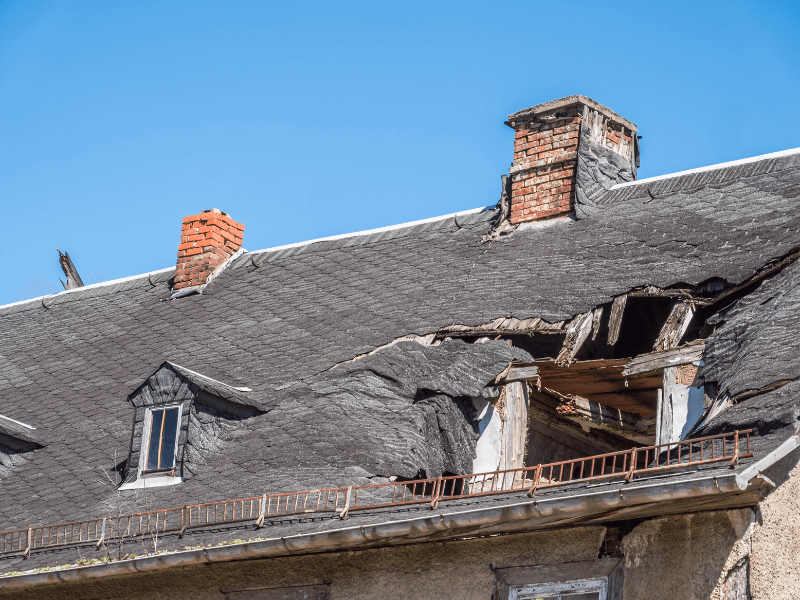
Do you have a hole in the outside of your house? While not a common home improvement issue, how to fix a hole in the outside of your house is a do-it-yourself (DIY) project that can be surprisingly challenging.
There are only a few ways to go about it: Ignore it and hope for the best, figure out how to repair the hole in the wall, hire a handyman to fix it, or start looking for companies that buy houses in any condition.
If you are leaning towards learning how to repair holes in your home yourself, you have come to the right place. Here are a few tips for the average homeowner regarding how to tackle that mysterious hole outside of your house.
Do You Have a Hole on the Outside of Your House?
If you are looking to sell a house fast in Apple Valley, unless you work with buy-as-is cash home buyers in Minnesota, fixing the exterior of your home only makes sense from a selling perspective.
The greater the curb appeal of your home, the higher the price you will likely get for it. There are more reasons to fix holes on the outside of your house, however.
One major reason is that insects and rodents can enter your home via a hole in the exterior. Bees, for example, can get through holes a little more than an eighth of an inch in diameter.
Mice can squeeze through a space about a quarter inch in diameter or the size of a nickel.
Smaller insects can get into even smaller holes and take up residence.
Other reasons to stay on top of a hole in the outside of a house include, but are not limited to:
- Mold infestation
- Rotting wood
- Water damage inside the wall
- Further damage to the wall
No matter how you look at the problem, fixing a hole in the wall sooner rather than later makes sense. Delaying only asks for trouble.
Identifying the Cause of a Hole Outside of Your House
Before you start, figuring out “why do I have a hole on the outside of my house” is almost as important as answering “how to fix a hole on the outside of my house.”
Why is as important as how in this case because home repairs like fixing a hole in the outside of a house are rarely a random problem and are just another cost associated when fixing up a house.
In almost every case, a hole in stucco or wooden or vinyl siding is a sign of a more serious issue. The possible problems associated with having a hole in your home include, but are not limited to:
- Missing water outlet piping
- Sealing materials that have degraded
- Insect or rodent penetration
- Penetration from woodpeckers
- Penetration from falling trees, branches, etc.
Any of those issues can lead to much larger, more serious issues, and you may not be able to tell what caused a hole once it is repaired, so figuring out the cause should be your first move.
Looking to Sell a House With A Hole In its Roof?
We make selling your house a simple affair. No inspections or repairs needed.
Just fill out the form below or give us a call at: (612) 260-5577 to get your free, no-obligation cash offer!
How To Fix a Hole on the Outside of Your House
How you fix a hole you find in your home depends on the type of hole it is and the type of exterior walls you have. While you might patch a small hole in s exterior stucco wall, you would take another approach for large holes or if your walls were made of wood or brick.
Determine Who Should Fix The Hole
After you know the cause of the hole, you need to figure out if it is something you can fix or if you need to get some professional help.
The best gauge, no matter what cool tools or materials you see on Amazon or at Home Depot is if the hole requires anything more than very elementary repair work, you should hire someone.
An old house will tend to be susceptible to DIY “mission creep,” which happens when you start a project, and the deeper you get into it, the more problems arise.
Other holes can be in places that require you to take risks to repair, including soffits, gutters, etc. Still, other holes require that you understand how to cut out a wall section and replace the wood or fiberglass siding.
If you do not have experience with any of the above, you may want to think twice about doing it yourself. A DIY tutorial might make it look easy, but with no experience, complex work rarely is.
Holes in Stucco
If the hole in the stucco is less than the width of a dime and penetrates beneath the stucco application, fill it with caulk, spackling or joint compound.
The goal is not to finish the home’s exterior but to plug the hole. Let it dry before adding anything else.
If the hole is larger than the width of a dime but goes beneath the exterior application, you will want to use an approved, weatherproof filler to plug the hole.
Once your filler is dry, using a trowel, apply a coat of the weatherproof patch to the area and let that dry.
Once the exterior patch is fully dry, sand it to remove rough edges. You might need to add another level of patch to make it flush with the rest of your wall.
Once it is level, apply a coat of paint to the patch.
Holes in Wood Siding
Use the same approach for smaller holes that penetrate through the exterior siding. Make sure, however, that you only fill up to the base of the wood siding.
Once the filler is dried, you can use a wood filler to make it flush with the exterior of the wall. At that point, you need to apply whatever treatment is already on the rest of the exterior of your home.
Holes in Vinyl Siding
If the hole is a quarter inch in diameter or less, use spray foam or silicone sealer and fill the gap in the siding at the point of the hole overflowing.
Let the fill dry, and use a utility knife to cut it flush with the siding. You can then apply a coat of paint to match the siding or, if the hole is small enough, match the color to a magic marker and color the fill-in.
To fix a medium hole, use a utility knife and cut out the portion of the vinyl that has the hole. If you can, take out an entire slab plank of vinyl, but if not, use a siding zip tool to separate the siding from its guides. Use foil tape on the back of the siding, and lock the siding into place.
Then use caulk to seal the hole and paint the caulk.
For a large hole in vinyl siding, first, verify that you have extra vinyl planking hanging around. Depending on whether you have siding, do the following:
If You Do Have Siding
Cut a replacement piece of siding that extends two to three inches beyond the perimeter of the hole. Remove the nailing strip at the top of the siding and the bottom lip. Affix the piece of siding over the hole with adhesive. Make sure that:
- The adhesive bonds with vinyl siding
- The replacement piece is slathered with adhesive
If You Do Not Have Siding
If you do not have a siding replacement, you can try to fill in the hole using the solution for medium-sized holes. You will have to use quite a bit of fill to completely seal off the hole. Once the sealant is dry, you can paint the sealant the color of your siding.
Another suggestion is to cover the hole with a piece of vinyl or plastic or a similar cover. Use a waterproof adhesive to bond the cover piece to the siding. One material that works well for this type of job and is waterproof is the interior room cove base. It is pliable enough that cutting it to fit is easy.
Cove base sizes range from 4 inches high up to 6 inches high. That should cover most larger holes in vinyl siding. Cut the cove base to fit, extending 2 to 3 inches beyond the hole’s perimeter. Generously apply adhesive onto the back of the cove base and affix it on top of the hole.

Future Proofing Your House from Further Holes
Unfortunately, there are not many things you can do to future-proof your home from your exterior walls getting a hole.
Obviously, with freak accidents, like a lawn mower shooting a stone through your siding, the solution is to be more careful. You can also make sure that you have your home sprayed for insects regularly to discourage them from visiting.
Conclusion
Exterior holes that are ignored almost always lead to other issues. By taking the time to fix them as soon as you notice them, you remove a reason to lower the price of your home and possibly avoid home invasions by insects and mold.
If you are fixing a hole in the exterior of your home to get it ready for sale, consider using cash home buyers in Minnesota as a quick, painless way to get what your home is worth.
We buy houses Minneapolis residents love and are ready for your call!
